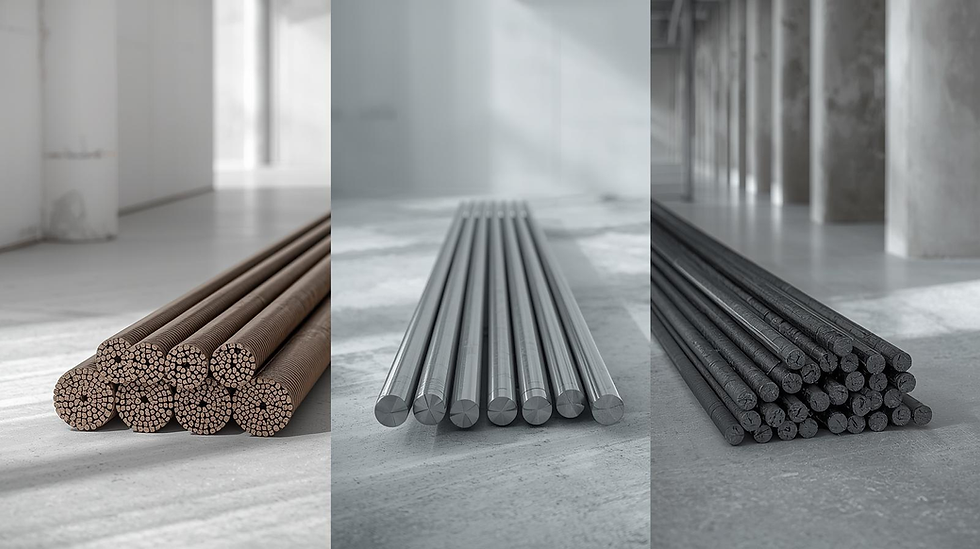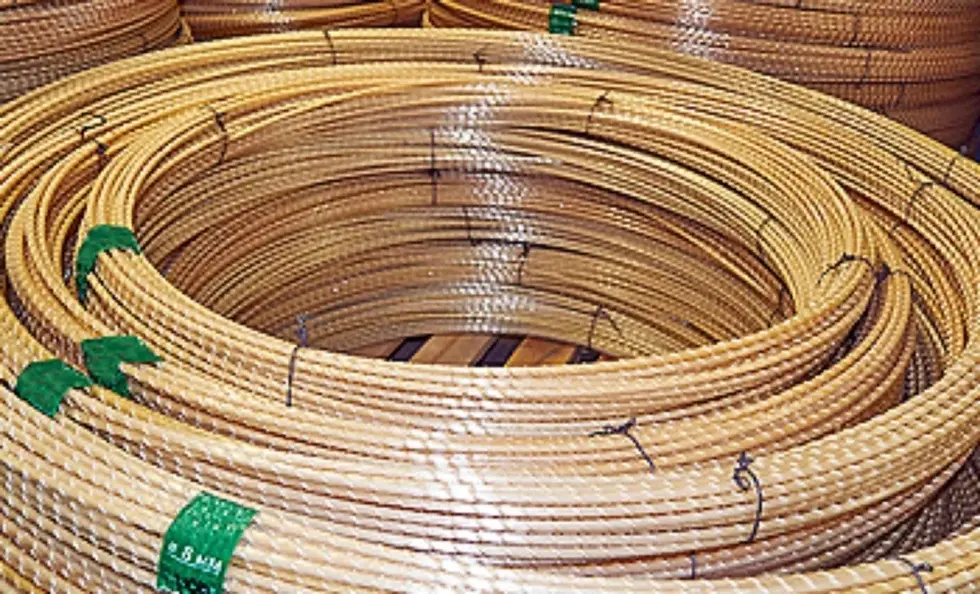Future Trends: Will GFRP Rebar Replace Steel in Reinforced Concrete?
- Kamal Sharma
- Sep 4
- 3 min read

Reinforced concrete has been the backbone of modern construction for over a century now. Originally, steel has been the most preferred reinforcement material due to its immense strength and durability. But however, innovations in construction materials are challenging the conventional practices. One such innovation that has recently gained a significant amount of popularity is GFRP rebar. But can it actually replace steel in the near future? Let's find out.
How Is Steel Used in Reinforced Concrete?
Reinforced concrete combines concrete's compressive strength with the tensile strength of reinforcement materials. Normally, steel bars are embedded within concrete to absorb tensile and bending stresses. This combination allows buildings, bridges, and other structures to endure significant loads without cracking or failing.
Steel is highly compatible with concrete because both materials expand and contract at similar rates under temperature changes. Additionally, steel’s tensile strength makes it ideal for resisting forces that concrete alone cannot handle. However, steel is prone to corrosion over time, especially in coastal or chemically aggressive environments.
What Are GFRP Rebars?
GFRP rebar stands for Glass Fiber Reinforced Polymer rebars. Unlike steel, GFRP is a composite material made from high-strength glass fibers embedded in a polymer matrix. It is non-metallic, lightweight, and corrosion-resistant, making it an attractive alternative to traditional steel reinforcement in certain applications. Some of the properties that make it a better alternative to steel in reinforced concrete include:
Corrosion Resistance – GFRP does not rust, which can significantly extend the life of concrete structures.
Lightweight – It is much lighter than steel, making transportation and handling easier on construction sites.
High Tensile Strength – While GFRP has lower modulus of elasticity compared to steel, its tensile strength is impressive and suitable for many reinforced concrete applications.
Electromagnetic Neutrality – GFRP does not act as a hindrance to electromagnetic signals which is beneficial in specific infrastructure projects like hospitals and telecom facilities.
Why Are GFRP Rebars Gaining An Edge Over Steel Rebars?
When you are using GFRP rebar in reinforced concrete, it provides several benefits such as,
Durability in Aggressive Environments
Steel can corrode when exposed to moisture, chlorides, or acidic conditions. GFRP, being non-metallic, withstands these conditions without degradation, reducing maintenance costs.
Reduced Structural Weight
Because GFRP is lighter than steel, using it can lower the overall structural weight. This can be particularly advantageous in retrofit projects, bridges, or high-rise constructions where minimizing dead load is crucial.
Cost Savings in the Long Term
Although GFRP may have a higher initial cost than steel, its longevity and reduced maintenance can offer significant cost savings over a structure’s life cycle.
Will GFRP Rebar Be Able To Replace Steel?
If we talk about the future, the construction industry is showing a gradual but steady shift toward adopting GFRP rebar. Its initial role is that it is the strongest reinforcement material in environments where corrosion poses the greatest risk. Over time, as research and design codes evolve, GFRP could become the default choice for a much wider range of structures.
Hybrid systems are already being explored, where steel and GFRP are used together strategically to balance strength, cost, and durability. Meanwhile, ongoing research is focused on improving the stiffness, fire resistance, and cost efficiency of GFRP, pushing it closer to mainstream adoption.
You may read: Different Types of GFRP Rebars and Their Applications
Bottom Line
While steel is unlikely to disappear overnight, the growing use of modern alternatives suggests that GFRP rebar is on track to become the reinforcement material of the future. As the industry embraces innovation and updated standards, GFRP rebar can move from being a specialized option to becoming the new norm in reinforced concrete.



Comments